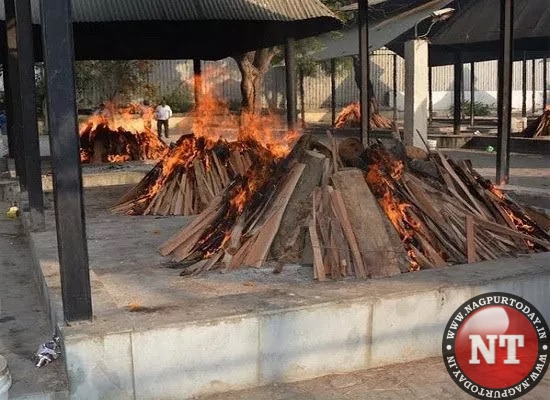Nagpur: A recent study conducted by the Center for Sustainable Development (CFSD), a local NGO, has shed light on a concerning issue in Nagpur city—crematoriums are identified as significant contributors to air pollution, posing health hazards to residents residing in their proximity. The study, unveiled on Wednesday, highlighted that a staggering 60 percent of crematoriums in Nagpur lack essential ‘chimneys,’ exacerbating air pollution concerns in nearby residential areas.
CFSD conducted an audit of all 19 crematoriums of Nagpur and surveyed 815 residents living in the vicinity. Ambazari Ghat, Bharatwada Ghat, Manewada Ghat, Dighori Ghat, Friends Colony Ghat, Gangabai Ghat, Kalamna Ghat, Mokshadham Ghat, Nara Ghat, Nari Takshashila Nirvan Ghat, Pardi Ghat, Punapur Ghat, Sahakar Nagar Ghat, Shanti Nagar Ghat, Vaishali Nagar Ghat, Wathoda Ghat, and Zingabai Takli Ghat were surveyed during the study.
Among the 19 crematoriums surveyed, a mere 8 possess chimneys, and of those, only 5 are currently operational. This deficiency in proper emission control infrastructure significantly amplifies the adverse impact of air pollutants on the local environment and the health of nearby inhabitants.
The gravity of this situation is further underscored by Nagpur’s inclusion in the list of non-attainment cities under the National Clean Air Programme (NCAP) by the Central Pollution Control Board (CPCB). The NCAP emphasizes the imperative need for mitigating air pollution, with a specific focus on cities grappling with air quality challenges.
Nagpur, under the ambit of the NCAP, has received substantial funds from the Central Government over recent years with the objective of enhancing the city’s air quality. However, the study reveals a critical oversight regarding the mitigation of air pollution from crematoriums—a crucial aspect outlined in the NCAP’s directives for all non-attainment cities.
“There is an utmost need to install electrostatic precipitator devices to filter air, chimneys in all facilities, and also to develop green buffers in all such crematoriums to avoid air pollution. NMC should follow the NCAP norms to mitigate pollution in crematoriums,” Leena Buddhe, Director, CFSD told a local newspaper. “Just beautification of crematoriums will not help to reduce the air pollution in the city. Public awareness is also needed and specially the residents who are living near such facilities,” claimed Buddhe.
The study highlights the sheer scale of the challenge posed by crematoriums in the city. As per the study, around 77 percent of citizens are dwelling just 500 metres from the facility, and 58 percent of respondents with children indicated that their child’s school is located just 1 km from the crematorium. A staggering 87 percent respondents believe that such close proximity poses a health risk to their children. Majority of the residents also reported increased health issues like burning eyes, persistent coughs and throat irritations.
“Out of 19 crematoriums, 12 are solely using wood as fuel and each cremation consumes about 300 kg of wood which is a huge loss of trees for wood,” said Buddhe. Buddhe also said that only 6 out of the 19 surveyed facilities offer a more eco-friendly option of agricultural waste briquettes, which require around 250 kg for each cremation.
The study recommended that the civic body should restore the non-operational chimneys and install new ones in all remaining crematoriums on an urgent basis. NMC should initiate research to compare the combustion efficiency of wood versus agricultural waste briquettes. The implementation of low-cost monitoring sensors can aid this study and yield accurate results, it stated.
Some of the crematoriums are providing briquettes for cremation for free of cost. People are unaware about it. Civic body should spread awareness about the use of such briquettes in the place of wood. The study also recommended conducting a health survey with the help of healthcare professionals in the vicinity of all 19 crematoriums to get details about the status of public health.














